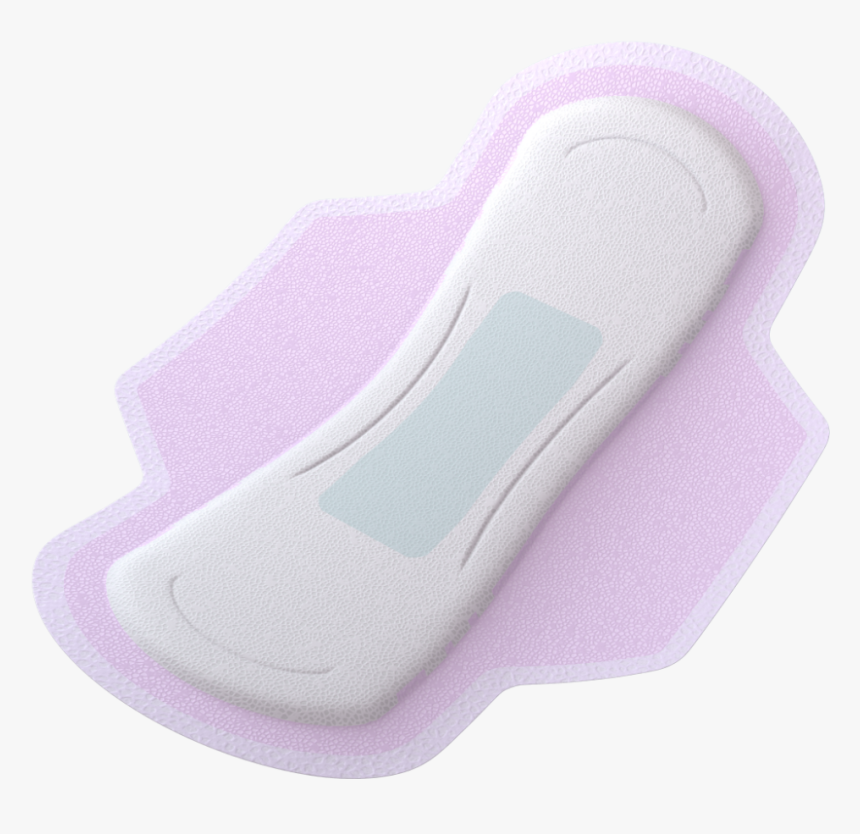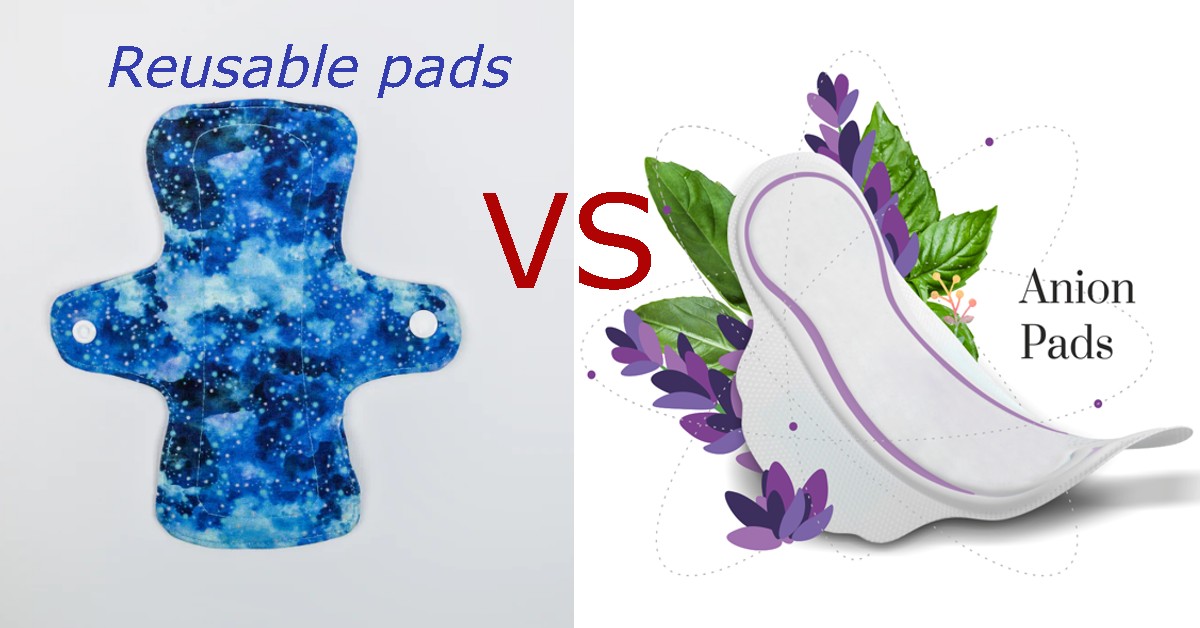Pads are pads, right? It would seem that way, but there is definitely a difference in the different types of pads that you buy. Plus there are so many brands to choose from that it can be a daunting task to try and figure out which brand will best suit you. On top of all this, the market has now introduced reusable cotton pads. But how do they measure up to the more traditional pads? Let’s find out.
What are reusable cotton pads?

It’s all in the name, isn’t it? It is pads made from pure cotton, which is then encased in a cotton pocket. These pockets have a snap button on its wings to keep the pad in place. A used cotton pad would then be rinsed in cold water, and can then be washed with the rest of your clothes. Some people prefer to wash them separately in to get rid of any lingering bacteria. This is a good idea since a cotton pad which is not washed properly is bound to give you a nasty infection, such as a yeast infection. There are a lot of pros to using reusable cotton pads. Firstly there is the fact that they are reusable, which steers away from disposable pads which lands up in landfills.
Secondly they are cost effective, since they can be reused. This is especially beneficial to girls and women who come from less-fortunate backgrounds and cannot afford to buy traditional disposable pads each month. Another great thing about reusable cotton pads is that it creates job opportunities, since it is quite easy to make these pads.
How reusable pads made?
Reusable cotton pads are made from layers of cotton fabric, and may include silk, hemp or wool as a backing to prevent leakage. Many women prefer dark colours for their reusable cotton pads, since stains may show up on lighter colours. Contrary to popular belief, staining does not occur because blood is allowed to dry on the cloth, but because hot water is used to try and get the stain out. This is because hot water sets the proteins found in blood.
The fact that the reusable cotton pads are fully biodegradable is another nod to their usefulness, as our current state of the world is very focused on living a greener lifestyle and leaving the smallest possible carbon footprint as possible.
Anion pads

Traditionally most pads are made from products sourced from the petrol industry, and then bleached by chlorine, dioxin, and other chemicals. These of course are not safe to wear, no matter what the advertisement may say. On average, 70% of women who wear traditional pads complain of side effects such as rashes, thrush and yeast infections.
Another major negative of traditional pads found in every supermarket and drugstore across the globe, is the fact that they simply go to landfills, where they have a decomposition rate of approximately 600 years. The chemicals used in them also break down and starts poisoning the earth.
Innovation
Along comes BingBing and creates a new innovative pad. Available in more than 80 countries and backed by major organisations such as the FDA, GOTS and FSC, the professional hygiene products manufacturer has gone above and beyond to bring a pad to the market that is a true game changer. Using nine layers to give the ultimate comfort, it also contains their patented Anion chip. The other layers are made up of responsibly-sourced papers and biodegradable film, each wrapped in their own little pocket. Even the glue used on the wings are sourced from natural tree gum, which really sets the Anion pad aside from its competitors.
But beside the small carbon footprint, what makes these pads so special? The Anion pads are made with a special anion antibacterial technology, which releases anions while it works. Furthermore it contains a super soft top-sheet layer, which is gentle on the skin, and also caters to women with sensitive skin. The Anion pads also absorbs odour molecules to reduce the smell of blood, and is highly breathable to also reduce odour. Furthermore the Anion pad has a V-hole which is designed to keep the pad dry for up to 8 hours.
What are anions?
Anions are negative ions that are abundant in nature. What they are is actually oxygen atoms with extra negatively charged electrons. These negative ions are completely odourless, tasteless, and invisible to the naked eye. Well, not completely odourless. Have you ever smelled the air after a thunderstorm? Or the smell when you are standing next to the ocean or a waterfall? Those are negative ions that you are ultimately smelling. There is a reason why people living next to the ocean tend to live a longer and healthier life, and that is because of their constant exposure to negative ions. These negative ions also make up what we know as the ozone layer. As these supercharged oxygen atoms come back down to earth, it filters out and cleans the air that we breathe. Unfortunately our general quality of air has gone from approximately 35% in the 1960s down to about 15% currently. This number rises if you live near the ocean or a forest, which would explain the better quality of life.
Importance of oxygen
Dr Otto Warburg made it clear back in 1931 that the cause of cancer is an oxygen deficiency. This deficiency creates an acidic state in the human body. He discovered that cancer cells cannot live in the presence of high oxygen levels, where the body is found in an alkaline state.
Anions are found in everyday life, if you stop to truly think about it. During the pandemic, one of the main resources was oxygen. But this is not just any oxygen, it is pure oxygen which contains life-saving anions. This is because anions improves lung function, reduces high blood pressure, and acts as an anti-inflammatory, just to name a fraction of the healing powers of anions. This is also why oxygen is one of the very first things that are given to people at an accident or fire. Anions are also regularly used in wound care, and critical patients are placed in hyperbolic chambers where they are then fully surrounded by anions.
The anions in Anion Sanitary Napkins
Now that we know what anions are, this should already make people excited that the scientists at BingBing were able to extract the knowledge and benefits of anions and incorporate it into the pads. What happens is that the anion strip on the pads release 20% of oxygen, which creates an alkaline atmosphere. This suppresses the multiplication of bacteria and viruses, which also prevents vaginal itching, thrush, yeast infection, and even cervical cancer.
Furthermore, strontium ferrite is added, which is bio-magnetic and activates the human bio-current, which also prevents various vaginal diseases. Another common problem that arises in many women using mass-produced general pads are urinary tract infections. What was found was that ureaplasma and mycoplasma infections were resistant to all antibiotics. This left patients with no means to properly treat the urinary tract infections. Dr Mira Bajirova decided to prescribe the wearing of Anion pads to her patients, and two weeks later her patients reported exceptional relief of symptoms. Upon investigation it was found that mycoplasma was no longer present, and that ureaplasma could now be treated with low-acting antibiotics.
Other health and medical conditions that has been observed to be treated to some extent was infertility, premature menopause, cervical dysplasia, human papilonium virus, general pain, psoriasis, migraine, arthritis, constipation, and insomnia.
In conclusion
While both reusable cotton pads and Anion pads have strong positive points, the biggest take-away is what works best for the target audience. Anion pads have amazing qualities, but aren’t readily available to lower income households or in developing countries. This is where reusable cotton pads are the better option, as it grants girls and women the opportunity to continue living their daily life even when they are on their period. For many girls of school-going age, this is life-changing, as they would otherwise miss out on at least a week of school each month. Since they cannot afford pads or tampons, they would sometimes resort to dangerous methods during their period.
The introduction of reusable cotton pads has literally changed the lives of millions of girls and women across the globe. This does not, however, take away from the incredible technology behind the creation of Anion pads. It has, in its own right, also changed the lives of millions of girls and women across the globe. The medical benefits reaped from the wearing of Anion pads are indisputable. Thus it is not truly a competition between the two, but comes down to the economic status and availability of each individual. Unfortunately there are still many stigmas and taboos clinging to the act of menstruation, which makes it difficult to start healthy conversations about the products available to girls and women, and proper self-care during menstruation. This is slowly changing, and will hopefully soon be available to all girls and women all around the world.
